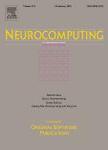版权所有:内蒙古大学图书馆 技术提供:维普资讯• 智图
内蒙古自治区呼和浩特市赛罕区大学西街235号 邮编: 010021

作者机构:Tianjin Univ Technol Key Lab Comp Vis & Syst Minist Educ Tianjin 300384 Peoples R China Tianjin Univ Technol Engn Res Ctr Learning Based Intelligent Syst Minist Educ Tianjin 300384 Peoples R China Tianjin Univ Technol Sch Comp Sci & Engn Tianjin 300384 Peoples R China
出 版 物:《NEUROCOMPUTING》 (Neurocomputing)
年 卷 期:2025年第624卷
核心收录:
学科分类:08[工学] 0812[工学-计算机科学与技术(可授工学、理学学位)]
基 金:National Natural Science Foundation of China [62176183, 92048301, 62020106004, 62302335, 62102285] Scientific Research Startup Fee for Introduced Talents by Tianjin University of Technology [01002107, 01002203]
主 题:Camouflaged object detection High-order attention Attention mechanism Tensor decomposition
摘 要:Wild animals often change their appearance such as color and textures to seamlessly blend into the surrounding environments to avoid predators and enemies, which poses extreme challenges to the task of Camouflaged Object Detection (COD). Recently, most COD methods have struggled to improve the detection performance using attention mechanisms to guide deep networks to focus on the subtle differences between camouflaged objects and backgrounds. However, these approaches tend to suffer from the lower orders inattention, which have limited abilities to model the subtle differences, as observed by applying the Taylor expansion to attention mappings. To solve this problem, we propose Explicitly High-order Attention (EHA) based on the tensor decomposition theory to effectively detect hidden objects, especially at edges. Furthermore, we use EHA as a basic block to design anew COD network EHAN, which consists of four modules: Cross-layer High-order Fusion (CHF), High-order Semantic Attention (HSA), High-order Edge Attention (HEA), and High-order Reverse Attention (HRA). Specifically, CHF progressively improves the features of a backbone by merging three of them at adjacent levels at a time. HSA roughly locates the disguised objects using the features of CHF at the three highest levels, whereas HEA integrates the features of CHF at the two lowest levels to predict edges accurately. HRA aims to discover distractions and incorporate the predicted edges for edge refinement. Extensive experiments on four public datasets demonstrate the superiority of our EHAN over state-of-the-art methods in quality and quantity.